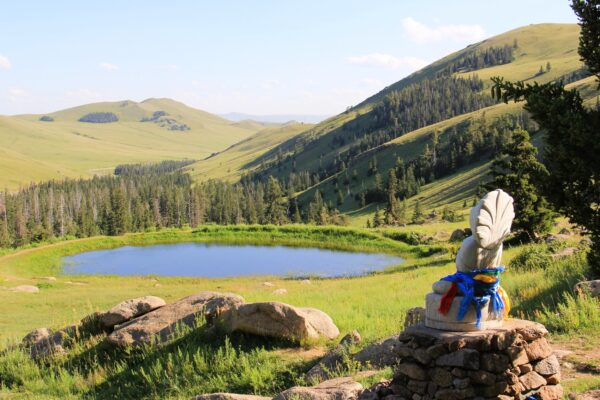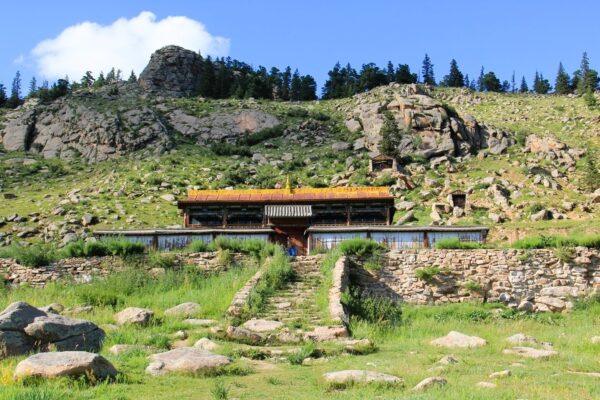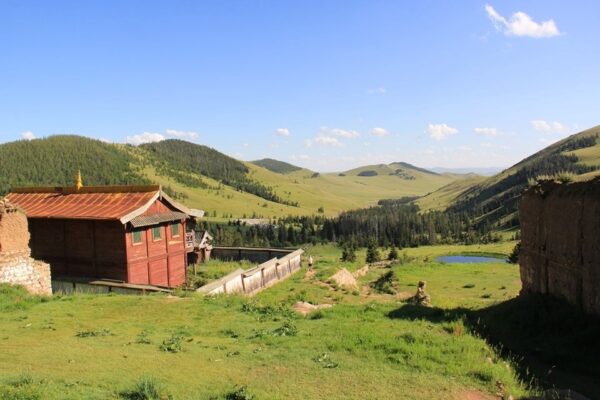Manzushir Monastery History
Nestled just 5 kilometers to the northeast of Zuunmod and 46 kilometers from the bustling capital of Ulaanbaatar, lies the serene and historical Manzushir Khiid monastery. This sacred site, established in 1733, once boasted over 20 magnificent temples and served as a vibrant home to 350 devoted monks. Sadly, the winds of change swept through during the Stalinist purges of 1937, reducing much of this spiritual sanctuary to rubble.
Today, the main temple has been restored and turned into a museum. The other buildings remain as reminders of their past glory, now standing in beautiful ruins. Although the monastery and museum might not rival the grandeur of their counterparts in Ulaanbaatar, the stunning natural setting undeniably enhances the experience, making a visit here truly worthwhile.
Surroundings
Manzushir Monastery overlooks a breathtaking valley, adorned with meandering streams and a diverse canopy of pine, birch, and cedar trees, all punctuated by imposing granite boulders that rise dramatically from the earth. This sanctuary is part of the Bogd Khan Uul Strictly Protected Area, a haven for wildlife where elk, wolves, and foxes roam. In the 19th century, around 2000 monks stood sentinel over the mountains, a fierce line of defense against poachers. Those caught trespassing faced harsh punishments, often dragged away in chains, beaten, and imprisoned in coffin-like cells.
Tourism
When you get close to the monastery along the main road from Zuunmod, be ready to pay an entry fee of T10000 for each person visiting. This fee grants you access to both the museum and the national park; it’s important to secure both tickets even if you plan to skip the museum. After passing through the gate, it’s only a short couple of kilometers to the main area, where you will find modest amenities including a shop, an unassuming museum, a restaurant, and several traditional gers offering accommodation. Among the notable sights is a remarkable two-tonne bronze cauldron, a relic from 1726, once used to prepare hearty meals for monks, with the capacity to boil ten sheep at a time.
The remnants of the monastery beckon from about 800 meters uphill from the museum. The friendly caretaker, residing in the neighboring compound, will graciously unlock the main building for you. Inside the monastery museum, you’ll discover intriguing exhibits that illustrate the layout of Manzushir and historic photographs that reveal its appearance before the devastation brought about by Stalin’s regime. The museum also showcases exquisite examples of Buddhist art, intricately crafted tsam masks, and several controversial Ganlin Horns, fashioned from human thigh bones.
For the adventurous spirit, take the time to ascend the rocks behind the main temple, where ancient Buddhist rock paintings can be found. The view from the summit is even more enchanting, immersing you in a tranquil pine forest that invites exploration. If you’re feeling daring and well-prepared, you can embark on an adventurous trek that extends all the way to Ulaanbaatar—just don’t forget to keep your national park ticket handy, as a ranger may request it along the way.












